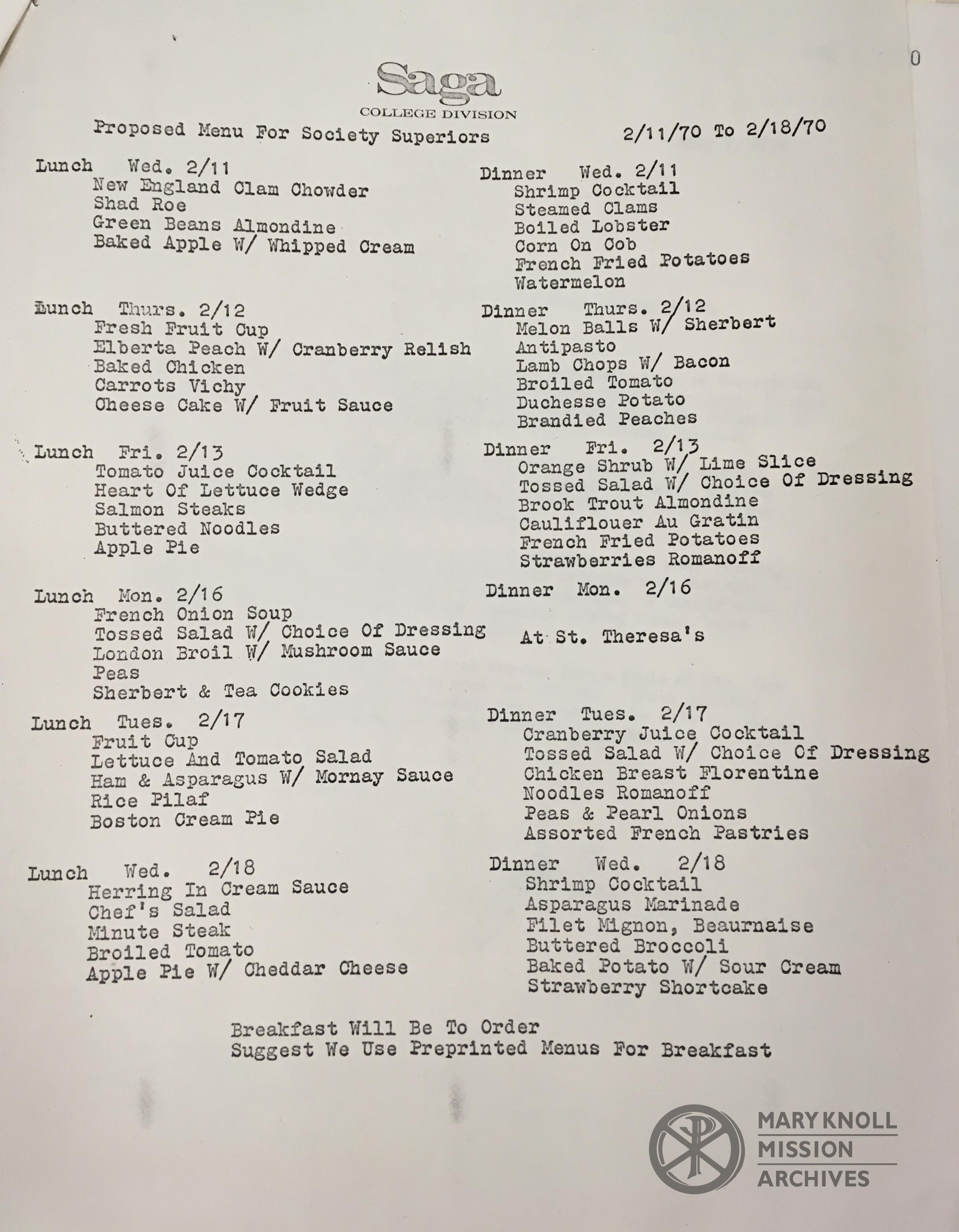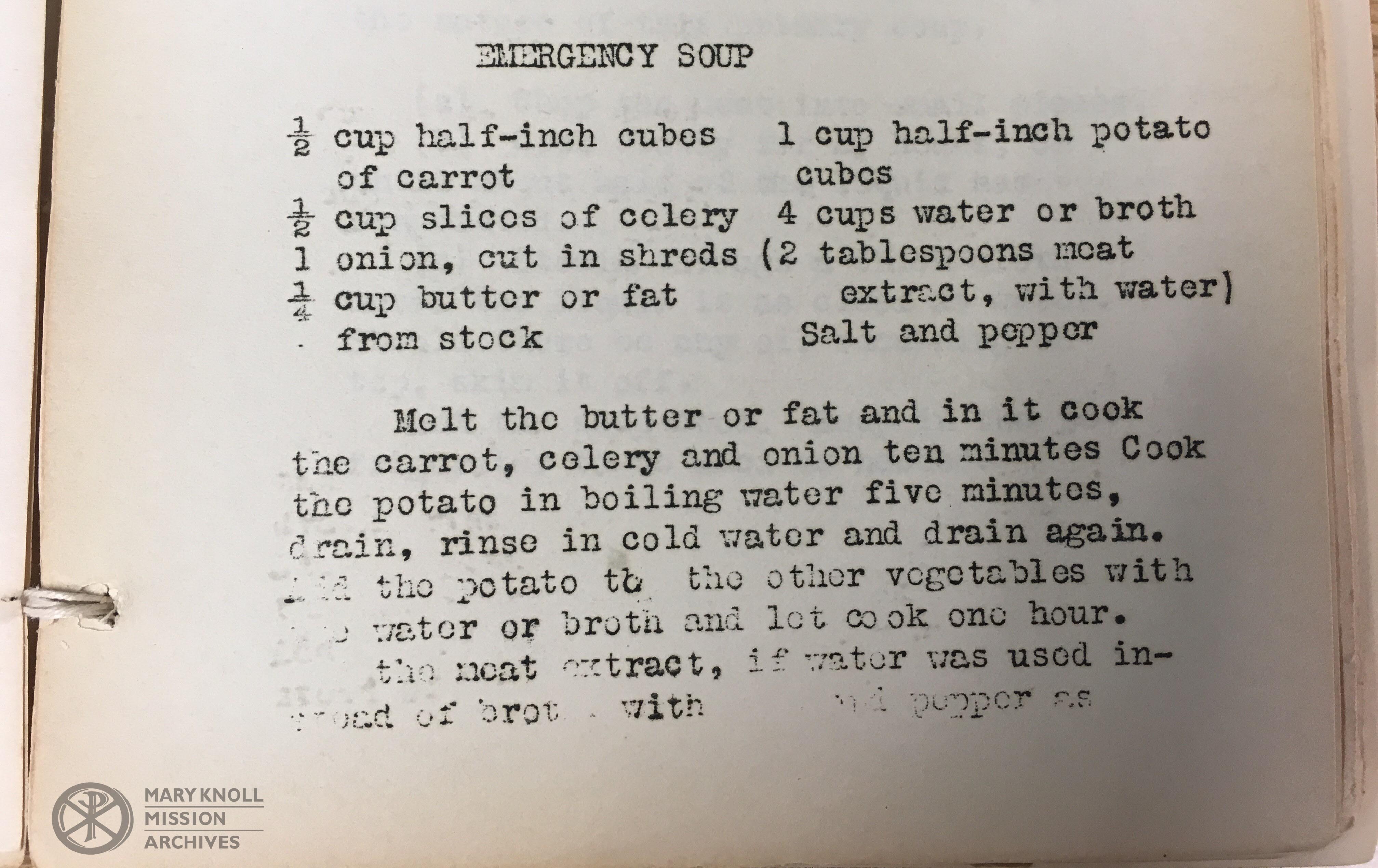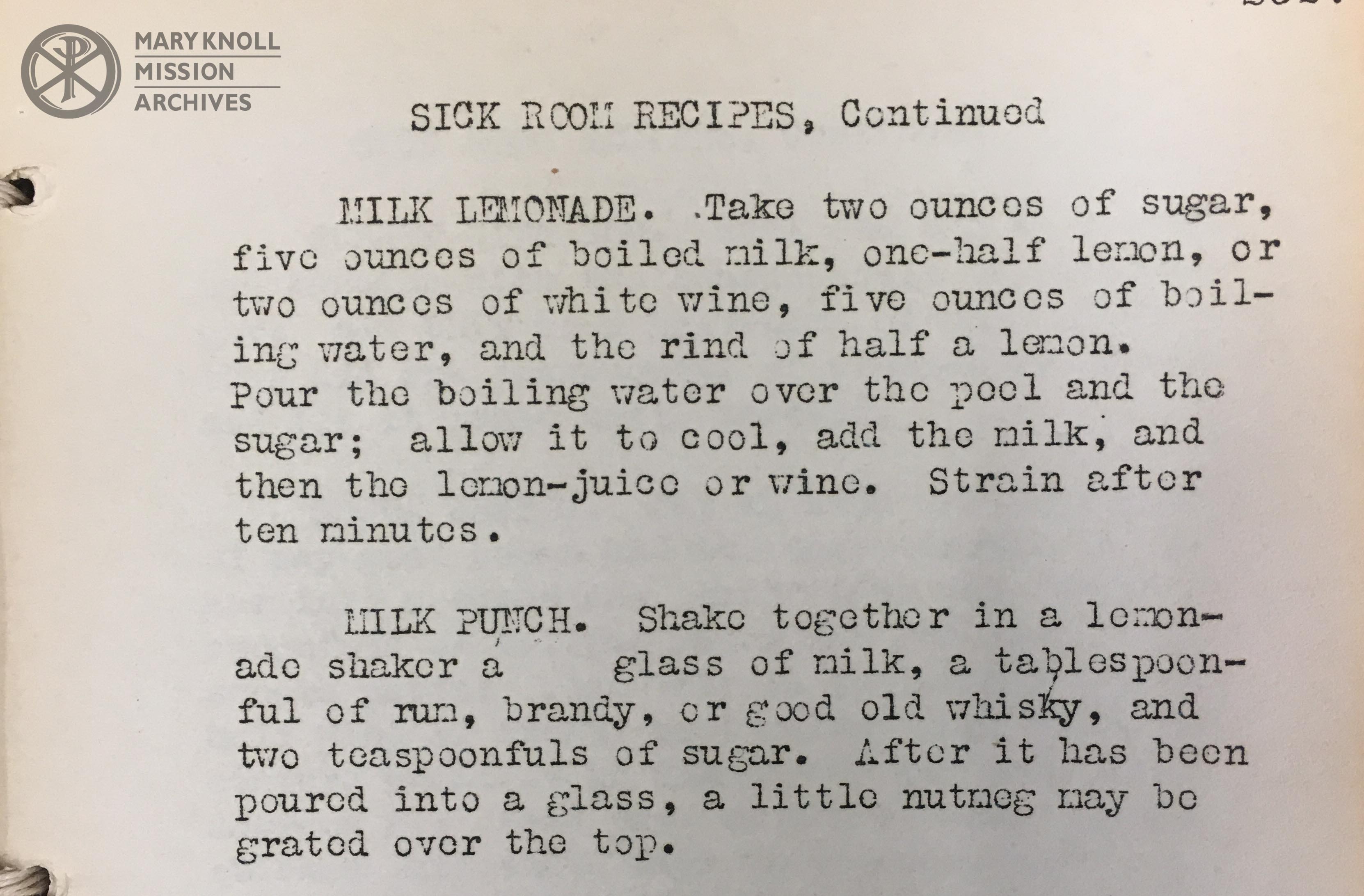Recently I’ve come across many examples of the meals that fueled our seminarians. Some of them are familiar – chocolate cake, roast pork, cesar salad – while some are a bit wilder than you or I may expect from a school feeding over 300 students each day. The Maryknoll philosophy when it came to feeding missioners was simple: serve good, wholesome food to strengthen the mind and body for mission.
Mother Mary Joseph Rogers weilded great influence over the seminary kitchen in Maryknoll’s early years and felt that each missioner ought to have at least a basic knowledge of cooking to prepare him for work abroad. In the early 1920s, Mother wrote down all the recipes she used to prepare meals and teach the seminarians. This cookbook was copied for every departing missioner, so he would have a taste of home at his fingertips. Many are recipes people continue to enjoy today, like lemonade, sweet rolls, and potatoes au gratin, but some show Mother’s own creativity and ingenuity.
In the 1940s, opinions about the proper diet for seminarians ran just as strong, but with a new flavor. In this letter to Fr. Eugene Higgins, the Society Procurator, Fr. James Drought, Vicar General, expressed his thoughts on the correct conduct of seminarians, including their breakfast menu. The selection probably looks familiar to many of us, but we may never know why Fr. Drought was not a fan of graham crakcers or believed “CORNFLAKES is no good.”
By the 1970s, the seminarians were no longer cooking for themselves, but they still had quite the selection at mealtime. In this sample menu, we can see that the students and faculty experienced a wide variety of flavors and presentations, from the tame fruit cup to the more adventurous brook trout almondine. I’m sure some of the students, especially those used to simpler choices back home, were surprised and intrigued by the options as they prepared for their future missions.




